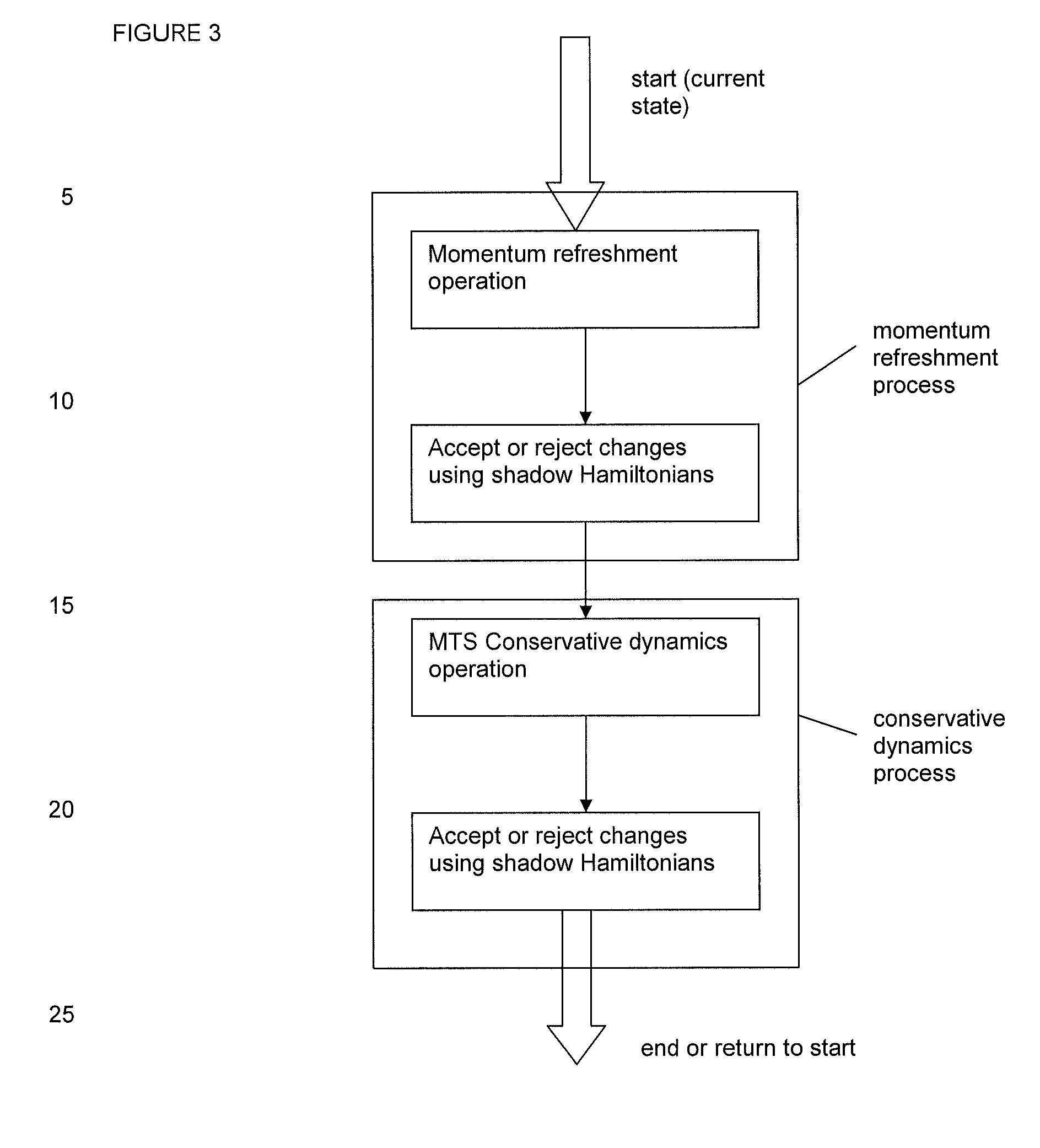Method, apparatus and computer program for multiple time stepping simulation of a thermodynamic system using shadow hamiltonians
a thermodynamic system and shadow hamilton technology, applied in the field of thermodynamic system simulation, can solve the problems of small time step size of conventional md, affecting time-dependent quantities, and affecting the application of md, so as to reduce or at least mitigate some bottlenecks of existing multi-scale methods, accurate reproduction of thermodynamic and dynamical properties, and computational robustness and efficiency
- Summary
- Abstract
- Description
- Claims
- Application Information
AI Technical Summary
Benefits of technology
Problems solved by technology
Method used
Image
Examples
Embodiment Construction
[0060]Embodiments of the invention combine an MTS method with Monte Carlo methodology and shadow Hamiltonians. It is a well-known problem of hybrid, Monte Carlo (HMC) and generalized hybrid Monte Carlo (GHMC) methods that the acceptance rate of the molecular dynamics proposal step deteriorates with increasing time-steps and increasing system sizes (Kennedy and Pendleton, 2001). One option to counteract this effect is to apply higher-order symplectic time-stepping methods. However this also increases the computational cost of HMC / GHMC. An alternative, less expensive approach has been proposed by Izaguirre and Hampton, 2004 for HMC and by Akhrnatskaya and Reich, 2006, 2008 for GHMC and is based on the concept of modified / shadow Hamiltonians for symplectic time-stepping methods. The key observation is that symplectic time-stepping methods (see Hairer et al., 2002; Leimkuhler and Reich, 2005 for an introduction to sympletic methods and modified equation analysis) conserve modified / shado...
PUM
 Login to View More
Login to View More Abstract
Description
Claims
Application Information
 Login to View More
Login to View More - R&D
- Intellectual Property
- Life Sciences
- Materials
- Tech Scout
- Unparalleled Data Quality
- Higher Quality Content
- 60% Fewer Hallucinations
Browse by: Latest US Patents, China's latest patents, Technical Efficacy Thesaurus, Application Domain, Technology Topic, Popular Technical Reports.
© 2025 PatSnap. All rights reserved.Legal|Privacy policy|Modern Slavery Act Transparency Statement|Sitemap|About US| Contact US: help@patsnap.com



